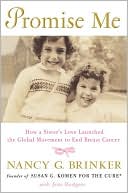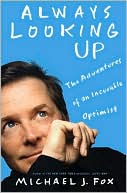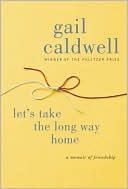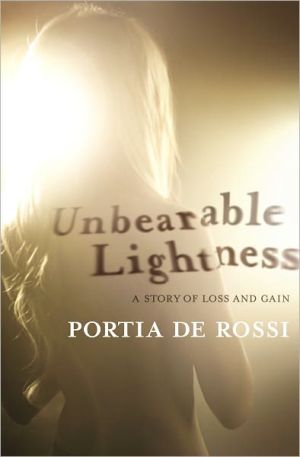Rachel in the World: A Memoir
What happens when love is no longer enough? Jane Bernstein thought that learning to accept her daughter's disabilities meant her struggles were over. But as Rachel grew up and needed more than a parent's devotion, both mother and daughter were confronted with formidable obstacles. Rachel in the World, which begins in Rachel's fifth year and ends when she turns twenty two, tells of their barriers and successes with the same honesty and humor that made Loving Rachel, Bernstein's first memoir, a...
Search in google:
A mother’s attempt to know the heart and mind of a daughter with mental retardation The Washington Post - Juliet Wittman Bernstein details the agonizing process of finding a home and occupation for Rachel. The book makes it clear that we, as a society, are not set up to help people like her or their families, particularly as money for social services continues to dwindle. But what gives the book its strength is Bernstein's ability to write as expressively about the times when she herself was nearing madness as about her deep love for her daughter.
Rachel in the World\ A Memoir \ \ By Jane Bernstein \ University of Illinois Press\ Copyright © 2007 Jane Bernstein\ All right reserved.\ ISBN: 978-0-252-03253-0 \ \ \ \ Chapter One\ Rachel is now a 4-yr., 8 mo.-old-child with evidence of multiple cognitive deficits on a central basis consistent with static encephalopathy. In addition to her visual handicap, there is evidence of difficulties with linguistic processing as well as a right hemiparesis indicating a greater degree of left hemispheric involvement. This would be consistent with her history of partial seizures arising from this hemisphere as well. The ongoing improvement exhibited would be consistent with an early prenatal insult responsible for her present problems. \ -Dr. Donald J. Wight to the Department of Special Services in Westfield, N.J., July 1988\ TAKING RACHEL SWIMMING\ In the summer of 1988, I bought a pair of water wings for Rachel, inflatable rings that fit around each upper arm. It took me until she was almost five years old to get them because I kept remembering my mother's advice of long ago to avoid such devices because children depend on them and then never learn to swim properly. I bought them because Rachel was getting hydrotherapy at Children's Specialized Hospital in Mountainside, New Jersey, where she was in preschool, and one day when I looked in on her, I saw her splashing wildly, laughter echoing in the pool, water wings around her arms. I was transfixed by the sight of my daughter, thrilled to the core. It was everything that I wanted for her.\ Rachel looked so healthy and beautiful in the water. The months when she had been sick from the infantile spasms and the regimen of ACTH shots were behind us. She was again a cheerful child, sunny from the moment she opened her eyes and announced to everyone in the house, "I am up!" and "I am going to the bathroom!" until she went to bed. She was buoyant and happy with herself, toilet trained during the day, at last, and seizure free for long enough that we were weaning her off one of her two medications. We were doing well, too. The time when overwhelming grief colored everything was long gone. Rachel was one of us now, a part of the family just as she was.\ We weren't the only ones who enjoyed her sunny nature. Everywhere I took her, people were drawn in by this tiny girl with ivory skin and brown ringlets, her big glasses (lavender wire-rims) slipping down her button nose. They were charmed when she approached them to say, "I'm Rachel. And this is my mother. Are you going to work now? Bye-bye, drive safely. Are you taking the van?" Strangers might notice the nystagmus, which made her eyes jitter, might intuit that something was different. But her speech was clear, her syntax and expression perfect, her forthright questions disarming and funny. "She's really smart," people often told me.\ I never disagreed. Though I was well aware of her delays, I believed that something shone within my delightful, difficult child, that there was something exceptional about her, some ablity not yet fully expressed. But what? Until the day I saw her swimming, no activity engaged Rachel, no toy or game-nothing except talking.\ I was sure this was because there was little she did well. Though she made excellent use of her limited vision and got around well enough to fool strangers into believing that her sight was just fine, we had seen her try to make conversation with a stone lawn ornament, and she had failed to recognize her father, ten feet away in the living room, until he spoke out. She had motor-planning problems, too; she walked and ran clumsily and often fell. She could hold a pencil but could not write. Nor could she do buttons, zippers, or laces, or play with toys that demanded much fine-motor control. Even her language-what appeared to be her greatest strength-was, paradoxically, her most serious weakness. The patter that charmed strangers was "cocktail party chatter," memorized loops she used at appropriate times, with the perfect inflection. She could not go beyond these exchanges, could not answer "why" or "when" questions, except by saying, "Hmmm. I'm finking," and she could not organize her thoughts to make genuine conversation.\ If only I could find something she loved to do, her whole life would be different, I believed. If I could find a toy that engaged her she wouldn't stand in the kitchen and slam the refigerator door repeatedly or bang on the cabinets with a spoon. If I could teach her a game she could play alone, she wouldn't follow me around the house, chattering nonstop. Maybe if she could do something, it would curtail her need to call out to locate blurry grownup shapes in the distance, reel them in with her bell-like hello, and keep them captive with her nonstop meaningless questions.\ The vision specialist from the New Jersey Commission for the Blind sent us toys at regular intervals-kits with bristly, fuzzy, and soft objects; big, beautiful blocks; beeper balls; and tapes of animal sounds-and I was always searching in stores and catalogs, and in the toy library in her school, for playthings she might enjoy. I worked with letters (which she recognized) and pegs (which she could count), and I learned from her speech pathologist to cue her when she was floundering and to keep her on topic. And when I was concerned and irritated that she followed me around the house the entire time she was home, calling my name and asking "how come" questions that needed no answers, I took her to a behavioral psychologist who designed a week-by-week plan meant to modify the behavior of my "extremely disfluent" daughter. When I told him in a moment of frustration that the thought of her stuck like this in the future was devastating, he said, "It's going to be devastating."\ I wept when I left the office, felt as if the world was coming to an end, then promptly and completely forgot his words. I would never have remembered the encounter at all if not for the notes I found years later, describing these visits. By then I understood why I had forgotten so quickly. I was too busy searching for toys and games-for something Rachel might love to do. A report that described her delays might fill me with despair, but then I'd witness the sheer delight she took simply waking and toddling into someone's room, or I'd hear her yawn like our dog or mumble to herself, after farting, "That was me, excuse me, I tooted," and I would be lifted from my sadness and back to work-searching for strategies that would help her and implementing plans at home. It was a job I took on eagerly. Nothing would make me stop.\ * * *\ On a humid June afternoon two weeks after I had watched Rachel swim, I went with my family to a graduation party, hosted by the parents of a boy from Rachel's preschool class at Children's Specialized Hospital. Sitting on the lawn chairs around the heated pool were Rachel's therapists, teachers, and caregivers, some of whom had known Rachel since she was six weeks old. While Paul stopped to chat with them, I slipped the water wings on Rachel's arms and took her into the water.\ Seeing the group of women poolside reminded me how much I had grown used to the delight they took in Rachel's progress and the attention they lavished on Charlotte when we picked up her sister from day care each afternoon. When I let Rachel go into the pool, I knew I would be letting go in other ways, too, taking her from this small, nurturing, hospital-based program, where she could have spent another year, and enrolling her in the district's "preschool handicapped" class. This choice to place her in a less-restrictive program was my way of saying that I believed that Rachel was ready to handle more independence. But it was a scary step into a world where she would not necessarily be valued.\ Watching her paddle away from me, into the deep end, my anxieties began to abate. Rachel seemed transformed by the water. Like any five-year-old in a pool, she was making bubbles, asking me to watch her kick, swimming ahead and calling for me to catch her. She was radiant, filled with energy.\ My fingers were puckery and her lips blue when I tried to take her out. Rachel, my passive, uncomplaining child, yowled and fought so much that the teachers and parents at the poolside couldn't believe the fuss she made. "Is that Rachel?" they kept asking, amazed.\ * * *\ I packed the water wings when we left for our cottage in Maine, a knotty-pine "camp" on Quahog Bay that Paul and I bought the year we were married. From the first season, it was our sanctuary, the place where we were always happy. During the winter months, when we were mired in the complex demands of everyday life, we would pine for "Maine House" (the name Charlotte bestowed on the cottage), and when the crocuses bloomed at "Foodtown House" (her name for our New Jersey home, with its unfortunate proximity to the supermarket), we came down with "Maine Fever," a yearning to smell the pine and see the bay sparkling at the foot of the little house.\ Before the kids were born, Paul and I bought a black, stitch-bound journal that became our summer diary. The first entries we made were mundane things-measurements, diagrams, and lists. Later, kids drew pictures on the unlined paper and guests left notes; newspaper clippings about notable events were taped onto the pages: a whale beached on Orr's Island; a nineteen-pound lobster pulled from a trap ("Cundy's Lobsterman Lands Whopper"). There are "journal entries" Charlotte dictated to me when she was not quite three and a "huge mad face" she drew that same summer.\ There are no entries that allude to the months after Rachel's birth when we stumbled through the days, nothing about the infantile spasms she'd had at the cottage, where we thought we were immune from grief, or the months when she moaned in pain. But, like points on a map, there is a record of the road back. Her caregiver Lourie, writing, "Ray-Ray is doing great, she's almost walking," and on the next page, her grandmother listing all the words Rachel had begun to speak: "Nana, Papa, turtle, row row row your boat, mommy, daddy, and others.... She is a walking doll."\ "Oh joy," I wrote the summer I put the water wings on Rachel and took her and Charlotte into the chilly water. Most of the time, we lowered ourselves into the bay from the granite ledge, but some afternoons we took the canoe out to one of the small nearby islands and "hand-swam" in the shallow water's edge, propelling ourselves forward in the muck-all of us, even Rachel. I saw what an equalizer the water was, and how, in the bay, we were all the same. I suppose I was just discovering what others have known for years, that because of water's natural buoyancy, people with neurological, muscular, or joint problems can do in water what is difficult or impossible for them on land.\ In Maine, it was more than just the fun of seeing Rachel swim that delighted me; it was the pleasure of simply being with her-not cuing her or coaching her or working with flash cards. There was no "behavior mod" when we were in the water. There were no arguments about her right to interrupt our conversation, when her turn might consist of saying, "You know what? Windsey's coming over, and my muver says ... Windsey's coming over, a-a-and she says, you know what? Windsey's coming over."\ We were simply hanging out, and it was very nice. It made me feel as if we were just an ordinary family having what a therapist, years later, would call "a slice of just plain being together." Not special or tragic, not on some journey from grief, and Rachel, exactly as she was, could be part of it.\ "Rae-Rae in water wings," I wrote. "Hand-swimming, singing, sun in my eyes. Pure joy. Oh joy. Oh wonderfulness."\ By summer's end I was certain I'd made the right choice, enrolling her in the district's pre-kindergarten beginning that fall.\ * * *\ A family we slightly knew invited us to the town pool one weekday afternoon, shortly after we returned to New Jersey. I agreed to go as a favor to Charlotte, who envied the girls whose mothers took them there each day. Charlotte yearned for us to belong to the pool the way she yearned for a father whose hair was brown and not silver, for a mother who shaved under her arms, for a sister who didn't have "problems," and for a house with a family room spacious enough to fit the conventional parents and sister she ached to have, along with Barbie's own house and car. I couldn't make her father forty instead of fifty-five. And I wouldn't change my values. But I was touched by her desire to be like the other kids in our conservative New Jersey town and wanted badly for her to be comfortable in her own skin, happy about herself. I could call the solarium a family room if it pleased her, and leave my snowmobile boots in the car when I entered her school on a winter day. And I could take her to the town pool so she could swim with her friend.\ Flotation devices such as water wings were not allowed at the pool, so I took Rachel to the smallest of the three pools. I watched her hand-swim in the shallow water, then watched her slide beneath the water, never struggling. She never coughed when I picked her up, and she told me, when I asked, that she was fine. But she seemed woozy and out of it.\ Several minutes later, she had a series of seizures that simply would not end. Status epilepticus, as it is known by physicians, is the kind of event that gives seizures a bad name, for it sometimes lasted for hours or even days and can be life threatening. The lifeguards rushed over, and the gawkers gathered close. The emergency squad arrived to help Rachel, and when they dispersed the crowd they pushed Charlotte far away from me. Rachel was intubated, to make sure she did not choke, and two physicians-a husband and wife on a rare afternoon off-administered intravenous Valium. Then Rachel was rushed to a local hospital.\ She spent nearly a week there while her medications were stabilized. In that time she had blood tests and EEGs. An MRI, newly approved for use on children, showed that she had septo-optic dysplasia, which was often seen with optic nerve hypoplasia, especially among the more impaired children. While this was a significant finding that foreshadowed her later pituitary problems, it was her "grossly abnormal" EEG that concerned us at the time. I was assured that the alarming seizures she'd had at the pool were the result of her being undermedicated, that the episode was inevitable and had absolutely nothing to do with the water. When her dosage was regulated and she was fully recovered, she could swim again.\ And so, cautiously at first, we took her swimming again. Rachel, awkward and hesitant on land, kicked and paddled, proud and vigorous.\ One Saturday in mid-winter, six seizure-free months after the status epilepticus, Paul decided to take both children for a swim at the Y in our town. They had been in the pool for forty-five minutes when Rachel went limp in the water, her head thrown back. Paul took her from the pool. Within a minute, she had roused and was begging to go back in. Nonetheless we were concerned.\ We had her drug levels checked and found that she was within the normal range for both medications. We even arranged for her to have a twenty-four-hour EEG, in which she wore the electrodes and a small battery pack in a knapsack for a full day and night. The EEG showed no subclinical seizures.\ "Take her swimming," said the neurologist, and so we did. This time I joined my family at the pool. I saw the way Rachel swam with utter abandon and joy, and then saw the sudden limpness, the peculiar way she roused, with no post-seizure grogginess, ready to go swimming again, furious that we said no.\ "Was the water very cold?" the neurologist asked me.\ No. She had been in the smaller pool, which was heated like her hydrotherapy pool, to nearly body temperature.\ What about the temperature outside the pool. Had it been hot? No. The chill when you stepped out of the pool was rather unpleasant.\ Did she hyperventilate when she was swimming? Had she been sick? Did she swallow a great deal of water?\ No to all of these questions.\ What I felt then, along with the frustration of being unable to figure out what triggered these seizures, was a determination that Rachel continue to swim-a determination shared by neither the neurologist nor my husband. When the summer was upon us again, I was forced to scrutinize my feelings. Why was I unable to let go of this desire in the face of her problems? Why was I so adamant that Rachel swim?\ My first argument went like this: In the water she was radiant and energetic. What did any of us gain by depriving her of the only thing that she did well?\ (Continues...)\ \ \ \ \ Excerpted from Rachel in the World by Jane Bernstein Copyright © 2007 by Jane Bernstein. Excerpted by permission.\ All rights reserved. No part of this excerpt may be reproduced or reprinted without permission in writing from the publisher.\ Excerpts are provided by Dial-A-Book Inc. solely for the personal use of visitors to this web site. \ \
Introduction 1Part 11 Taking Rachel Swimming 152 When She Was Small 273 Taking Care 414 On Regret 555 Rachel Flies Alone 716 At Seventeen 877 Rachel at Work 1038 Talking 125Part 29 Kishorit 15110 The Fourth Visit 16311 Love and Death 17312 Lifesharing 18913 At Emilia's 21114 Commencement 22915 How It Happened 24116 A Perfect Place 251Acknowledgments 265
\ Juliet WittmanBernstein details the agonizing process of finding a home and occupation for Rachel. The book makes it clear that we, as a society, are not set up to help people like her or their families, particularly as money for social services continues to dwindle. But what gives the book its strength is Bernstein's ability to write as expressively about the times when she herself was nearing madness as about her deep love for her daughter.\ —The Washington Post\ \ \ \ \ Library JournalThis sequel to Bernstein's Loving Rachel: A Family's Journey from Griefprovides a rare, honest, even gritty glimpse into the life of a young person with the dual diagnosis of mental retardation and mental illness. The author (creative writing & English, Carnegie Mellon Univ.; Bereft: A Sister's Story) deals candidly and lucidly with the challenges of raising Rachel from her school-age years through early adulthood. She describes Rachel's entry into the worlds of work, travel, social activities, and even "love." Together, they manage a sojourn abroad, where Rachel lives in a kibbutz while her mother pursues her academic work as a Fulbright scholar. The author describes triumphs in getting the help Rachel needs through Medicaid, Title XIX, and growth-hormone treatments as well as the downside of living with someone who is demanding and quite unlovable at times. The memoir concludes with the dilemma such young people face when parents can no longer care for them or, as in Rachel's case, when they want to leave home. An unsentimental yet inspiring story of unshakable mother love, this book is recommended for public libraries.\ —Antoinette Brinkman\ \ \ \ Kirkus ReviewsRefreshingly unsentimental, wrenchingly candid sequel to the author's previous memoir about her developmentally challenged daughter, Loving Rachel (1988). Writing with stylistic clarity and emotional fierceness, Bernstein (English and Creative Writing/Carnegie Mellon) does not sugarcoat the challenges facing the parents of a child with Optic Nerve Hypoplasia (ONH). That was the diagnosis her second daughter Rachel received when only six weeks old. Almost blind, physically and intellectually underdeveloped, easily distractible, Rachel required more and more care as she grew from kittenish babyhood into puberty and beyond. Moving from New Jersey to Pittsburgh, the author, husband Paul and older daughter Charlotte experienced enormous stresses from Rachel's constant demands. She couldn't dress herself or safely take a walk alone; unable to sleep past the first glimmers of sunrise, she followed people around, talking nonstop. After growth-hormone shots made her daughter bigger and more assertive, the author realized that she could no longer care for Rachel by herself. (By this time, she was divorced from Paul, who was dying of liver disease.) Bernstein took it as her mission to launch Rachel into the world, finding means to deliver the essential caregiving that would enable her daughter to enjoy a degree of independence and self-determination. It wasn't easy working the system to get the Medicaid and Title XIX funding for therapeutic support staff and habituation aides that Rachel was legally entitled to, and Bernstein grew increasingly politicized and infuriated. But during a promising year on an Israeli kibbutz in 2004, Rachel learned to work at simple tasks in a toy factory and evenacquired an adoring boyfriend. "Lifesharing" (adult foster care) didn't work, but a fully funded community living arrangement did, and at age 21 Rachel moved happily into an apartment with other young women. A bracing testimony-not at all self-flattering-to parental love and advocacy.\ \








